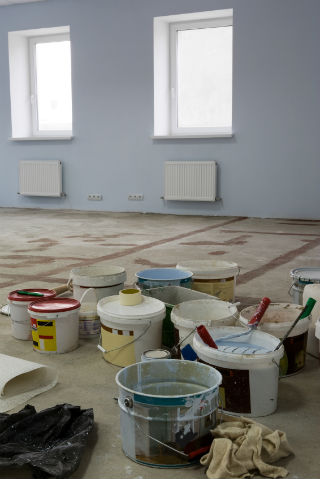
Looking for a place to start your recycling efforts? Think outside of the box, by starting within your own workspace. As a nation, we have a long way to go.
Remember the researched claim concluding that the U.S. falls somewhere in the
middle of recycling frequency worldwide?
Britain has a recycling watchdog system that certainly puts the U.S. in its place; non-recycling offenders answer to government. There is a large movement toward a global understanding that we need to preserve our environment, and, “the days when small firms could simply throw all their rubbish in the bin are long gone,” according to the
BBC.
In fact, if any office in Great Britain has more than 200 kg of hazardous waste per year, it must report it to the Environment Agency. The result of that report is the watchdog eye of the government on that business… and a mountain load of pressure to reduce waste.
So, let’s ask what defines dangerous office waste, how quickly does it build up and what can we do with things we can’t recycle?
Dangerous waste by definition: Much like home waste, the categories are few and distinct. Some hazardous home waste is also found at the office. The main offenders are as follows:
- Popular products used to patch up an office. Examples: paint, varnish, stain, paint thinner, paint stripper, caulk, adhesives
- Pesticides, even for sanitary reasons. Examples: insecticide and insect repellent, disinfectant, wood preservative
Remember, the common factor is that these things are
not e-waste or simply an electronic. They are things that
cannot be used.
According to the Washington state division of the Environmental Protection Agency, the question to ask is,
Are the wastes ignitable, corrosive, reactive or toxic?
Much like
household waste, there are ways to identify dangerous recycling items and avoid even bringing them into the office in the first place. And, just in case you were wondering how much waste will get a British company a watchdog assigned to it, 200 kg equates to approximately 10 small TVs, or 14 lead acid car batteries, or 500 fluorescent tubes, or five domestic fridges. The serious commitment to reducing waste and recycling is admirable, and is the result of livable changes that we can follow.
 Looking for a place to start your recycling efforts? Think outside of the box, by starting within your own workspace. As a nation, we have a long way to go.
Remember the researched claim concluding that the U.S. falls somewhere in the middle of recycling frequency worldwide?
Britain has a recycling watchdog system that certainly puts the U.S. in its place; non-recycling offenders answer to government. There is a large movement toward a global understanding that we need to preserve our environment, and, “the days when small firms could simply throw all their rubbish in the bin are long gone,” according to the BBC.
In fact, if any office in Great Britain has more than 200 kg of hazardous waste per year, it must report it to the Environment Agency. The result of that report is the watchdog eye of the government on that business… and a mountain load of pressure to reduce waste.
So, let’s ask what defines dangerous office waste, how quickly does it build up and what can we do with things we can’t recycle?
Dangerous waste by definition: Much like home waste, the categories are few and distinct. Some hazardous home waste is also found at the office. The main offenders are as follows:
Looking for a place to start your recycling efforts? Think outside of the box, by starting within your own workspace. As a nation, we have a long way to go.
Remember the researched claim concluding that the U.S. falls somewhere in the middle of recycling frequency worldwide?
Britain has a recycling watchdog system that certainly puts the U.S. in its place; non-recycling offenders answer to government. There is a large movement toward a global understanding that we need to preserve our environment, and, “the days when small firms could simply throw all their rubbish in the bin are long gone,” according to the BBC.
In fact, if any office in Great Britain has more than 200 kg of hazardous waste per year, it must report it to the Environment Agency. The result of that report is the watchdog eye of the government on that business… and a mountain load of pressure to reduce waste.
So, let’s ask what defines dangerous office waste, how quickly does it build up and what can we do with things we can’t recycle?
Dangerous waste by definition: Much like home waste, the categories are few and distinct. Some hazardous home waste is also found at the office. The main offenders are as follows: